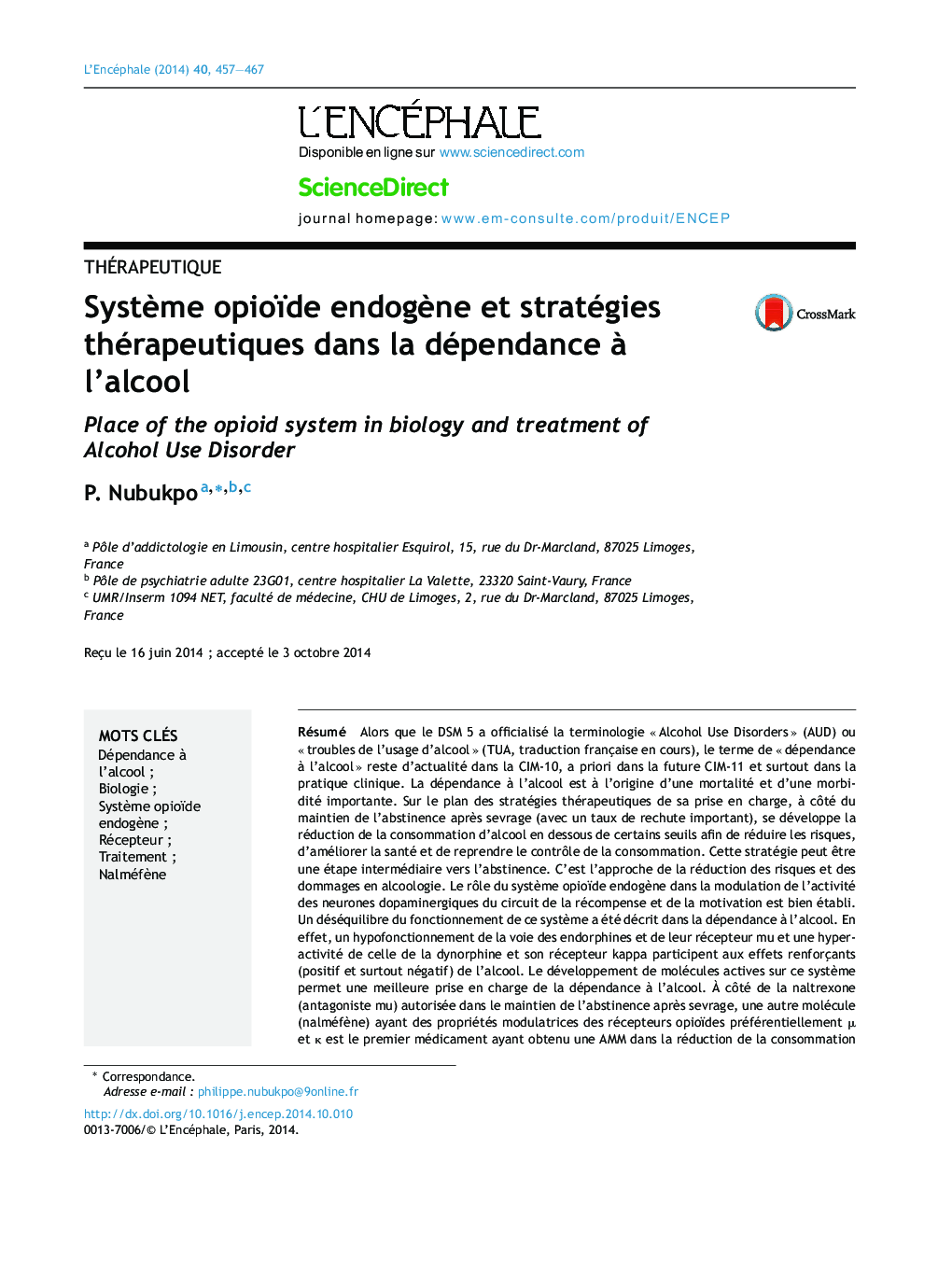| Article ID | Journal | Published Year | Pages | File Type |
|---|---|---|---|---|
| 4181634 | L'Encéphale | 2014 | 11 Pages |
Abstract
While the DSM 5 has formalized the terminology “Alcohol Use Disorders” (AUD) or “disorders of the use of alcohol” (UAW French translation in progress), the term “alcohol dependence” still used in ICD-10, apriority in the future ICD-11 and above in clinical practice. Addiction to alcohol is the cause of mortality and major morbidity. In terms of therapeutic strategies for its management, alongside the maintenance of abstinence after withdrawal (with a high rate of relapse), the reduction of alcohol consumption below certain thresholds of intake is emerging in order to reduce risk, improve health and regain control of consumption even be an intermediate step towards abstinence. The role of the endogenous opioid system in the modulation of the activity of dopaminergic neurons from the circuit of reward and motivation is well established. An unsteadiness of this system has been described in the alcohol dependence. Indeed, a hypofunction of the endorphin pathway and its mu receptor and a hyperactivity of the dynorphin pathway and its kappa receptor participate in the alcohol reinforcing effects (especially positive and negative). The development of active molecules in this system allows better management of alcohol dependence. Besides naltrexone (mu antagonist) allowed in the maintenance of abstinence after withdrawal, another molecule (nalmefene) with modulating properties of μ and κ opioid receptors is the first drug having obtained an MA in reducing consumption in adult patients with alcohol dependence. Its modulating original pharmacological properties by targeting both the positive but also the negative reinforcing effects of alcohol, are responsible for its development in reducing consumption in the alcohol dependence.
Related Topics
Health Sciences
Medicine and Dentistry
Psychiatry and Mental Health
Authors
P. Nubukpo,
